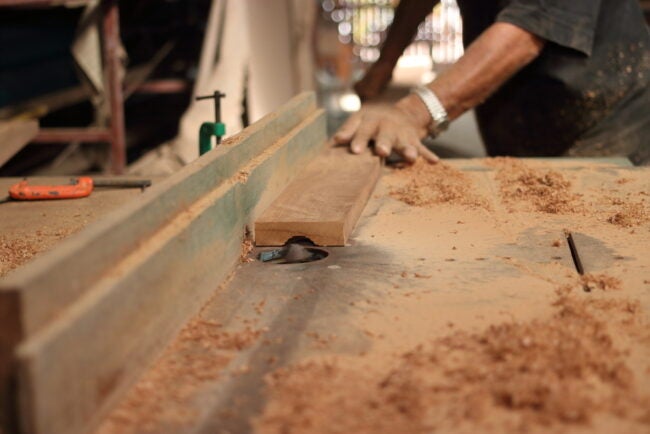Adding the best router table to your workshop can take your woodworking up a notch without the need to purchase another power tool.
If you make a purchase after clicking on one of our links, lisbdnet.com or one of our partners may receive an affiliate commission.
- Best Way To Clean A Motorcycle Engine (Cheapest), How To Clean A Motorcycle Engine
- Elementary The Best Way Out Is Always Through (Tv Episode 2015)
- Nintendo Ds Fighting Games, Ranked Best Ds Fighting Games ?: Nds
- The 15 Best Asian Restaurant In Los Angeles, The 15 Best Asian Restaurants In Los Angeles
- Best Edc Knife Under 30 Dollars, The 17 Best Edc Pocket Knives In 2021

Credit for the picture goes to: Amazon.com
Bạn đang xem: Best Router Table 2016 – Best Router Table For Diy Woodworkers
What to Consider When Choosing the Best Router Table
Both the size of your workshop and the type of router you own should be taken into account when making your purchase. Size, portability, material, base plate style, and router compatibility are all things to think about when shopping for a router table. Considerations such as these and more will be discussed further below.
Freestanding vs. Benchtop
Although benchtop router tables are common, freestanding tables are more popular among users. Standard features of freestanding tables include strong bases and expansive tops that can accommodate both long and wide boards. The typical dimensions for a freestanding router table are 32 inches in length and 24 inches in width. Freestanding router tables have the drawback of being cumbersome to move between different job sites due to their weight.
Benchtop router tables are typically smaller than freestanding router tables, measuring only 16 inches wide by 24 inches in length, so they can’t handle boards of the same size. Benchtop router tables are not as stable as freestanding models because they rely on an additional support surface, such as a workbench. Benchtop routers have the advantage of portability due to their smaller size and lighter weight in comparison to freestanding models.
Size
The largest piece of work that can be accommodated by a router table is proportional to its size. The standard dimensions of a router table’s top are between 22 and 36 inches in length and 16 and 24 inches in width. Boards between 6 and 8 feet in length can be supported by a table measuring 22 inches to 36 inches in length. It stands to reason that boards of equal width would benefit from being placed on a similarly sized table.
Material
The cost and longevity of router tables are affected by the materials they’re made from. For router tables, the most common material is medium-density fiberboard (MDF) because of its strength and rigidity. To be useful as a work surface, an MDF top needs to be at least an inch thick. Exposed MDF will absorb water like a sponge and swell, making a mess of the countertop. Melamine-coated MDF countertops are preferred because they last longer and protect the wood from moisture.
Xem thêm : The Best Class In Runescape: Definitive Guide For You
A high-pressure laminate (HPL) surface is used on some MDF tables; this combines a melamine top with layers of protective resins to create a very sturdy table. Most users would benefit greatly from a router table constructed with HPL on both sides, as this material is less likely to warp over time.
Comparatively, phenolic resin is of even higher quality than medium-density fiberboard. Tables made from phenolic resin have the advantages of being thinner than MDF, being water-resistant, and keeping their form over time. Some of the most high-priced router tables are made from phenolic resin.
Additionally, metal router tables are considered to be of the highest quality. A solid, long-lasting, and shape-retaining cast aluminum countertop. The tops of pro shop router tables, the best on the market, are made of cast iron. Compared to other router table materials, cast iron is the only one that meets or exceeds all three criteria of being flat, stable, and long-lasting.
Router Compatibility
A good router table will have interchangeable base plates to accommodate the varying hole patterns found in different router brands. Router tables with interchangeable base plates are not recommended. The plates’ structural integrity can be compromised by the abundance of holes, which also serve as dust catchers.
Mounting Plate
The router’s mounting plate, also known as the base plate, slides into a slot in the tabletop, securing the router in place. Aluminum or phenolic resin would be ideal for this purpose because of their strength and flatness requirements under the weight of the router. The router can only be used if it fits securely into a suitable mounting plate. The holes for mounting must be a perfect fit for the ones on the router.
The plate must be level with the router table, so a good router table will have a plate-leveling system with four or more leveling screws. Easy installation of the plate should also be taken into account. If you intend to use the router both with and without a table, you shouldn’t get a router table that requires a complicated mounting plate.
Miter and T-Slots
An ordinary T-slot can be found on the top of most router tables, permitting the use of a miter gauge and other ancillary tools. For cutting at an angle, a miter gauge is useful because its fence can be adjusted to almost any setting the user needs.
Xem thêm : The Wolf Among Us Best Choices, Which Choices Make For The Most Interesting Story
T-slots are long grooves that run the length of the table, and the gauge is mounted on a long metal guide that slides through them. A router table’s fence will see the bulk of the action, but a miter gauge will be put to use occasionally.
Fence
It is essential that a router table have a fence that can be adjusted easily and quickly. The router operator will typically push the material up against the fence in order to direct it through the blade. The fence, whether it’s made of wood or metal, needs to be strong. Having a sturdy surface to push workpieces against is essential for achieving precise router cuts.
Router tables may have either a single-piece fence or a split fence. More options are available with two-piece fences because the infeed can be adjusted independently of the perimeter. This fence allows for intricate jointer cuts to be made with the router.
The downside is that a two-piece fence can be difficult to align for straight cuts. The straight edge of a board can’t be joined with a single piece, but alignment isn’t an issue if the fence is a single unit from infeed to outfeed.
Additional Features
Additional features, storage, and even cleanliness aids are available on many router tables. Router lifts are tools that make it simpler to raise and lower a router’s bit, as well as change bits. Router lifts are an optional extra that can be bought for a router table if it doesn’t come with them.
Router tables with built-in storage bins are ideal for people who like to have their tools and supplies close at hand. You can keep extra base plates, miter gauges, and router bits in this convenient drawer. Exhaust ports on routers let the operator connect a hose to draw the sawdust away from the work surface and into a trash can.
Our Top Picks
The following are examples of high-quality router tables made by leading companies in the industry. If you’re looking for a template that will work for your endeavors, keep reading!
Nguồn: https://directmarketingcenter.net
Danh mục: Best









